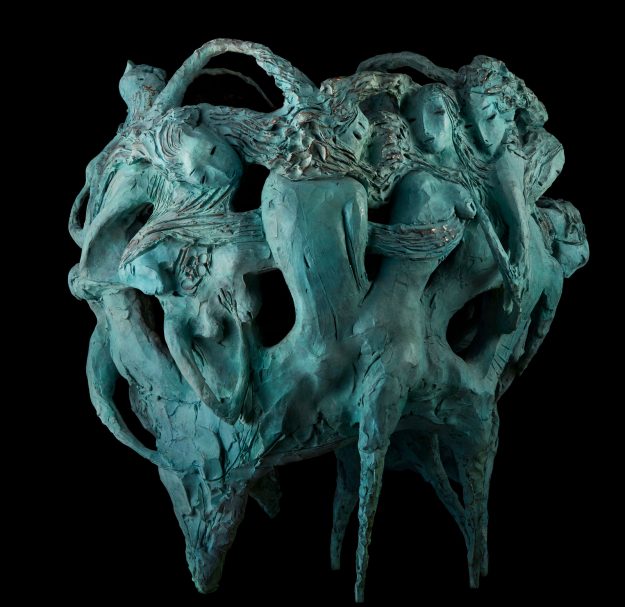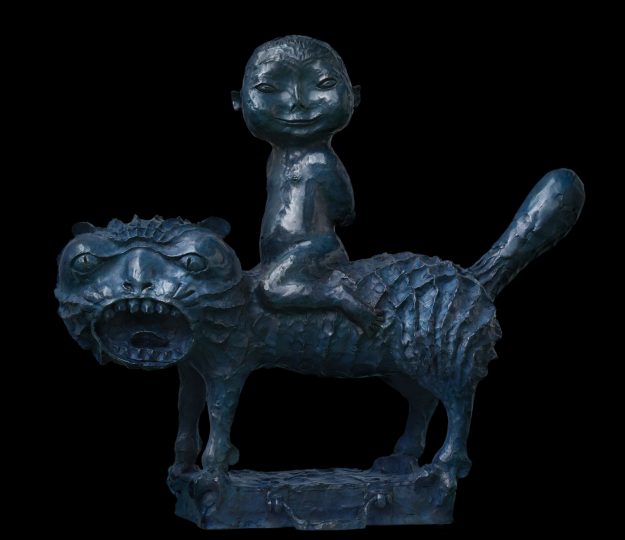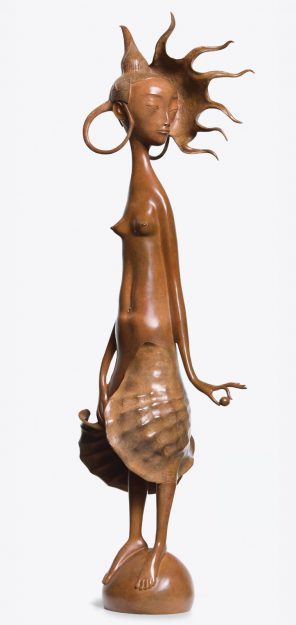
Shortly after a boy was born in Buryatia in February 1967, his mother asked Buddhist lamas to give the baby a name, following a long-standing tradition in the Russian republic, where locals have practiced Tibetan Buddhism alongside their indigenous shamanistic tradition since the 17th century. She was given a name for the child—Dashi—as well as a prophecy: if Dashi lived past the age of 15, he would be a great man.
Fifty-four years later, that prediction has proven true—Namdakov’s sculptures, drawings, and jewelry can be found today in museums and galleries around the world—but when as an adolescent he contracted a severe and unexplained illness, his future seemed far from certain. After doctors failed to cure him, his mother brought Dashi, near death, to a local female shaman. The shaman said that the Namdakov family had angered spirits by neglecting to honor their ancestors—who include a long line of dharkans, craftsmen esteemed for their skillful metal work, artistry, and shamanistic talent. She led a rite to seek the spirits’ forgiveness, and the young Namdakov recovered. From that moment on, Namdakov devoted his life to developing his artistic gifts as a way of embodying his spiritual heritage.
Namdakov forges metal sculptures that seem familiar yet strange, as if they had emerged from the mists of a mythical past.
Covering a portion of Russian Siberia on the Mongolian border, Buryatia has long been the meeting place of great cultures and continents, and Namdakov channels this history into dreamlike works. Drawing on his dharkan lineage as well as traditional Buddhist and shamanistic imagery, he forges metal sculptures that seem familiar yet strange, as if they had emerged from the mists of a mythical past. Indeed, Namdakov sees his art as a shamanistic practice that keeps his ancestors’ ways alive.
Namdakov’s sculptural universe is populated with sinuous animals, monks, shamans, and fierce warriors or beautiful women on horseback. Works like Fantasy (2013) show the interdependence of humans and animals, and Boy on the cat (2010) contrasts a carefree child with the fierce cat he is riding.
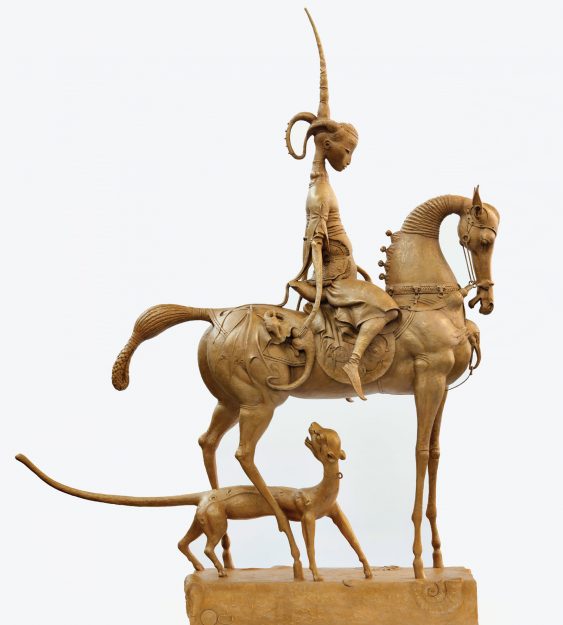
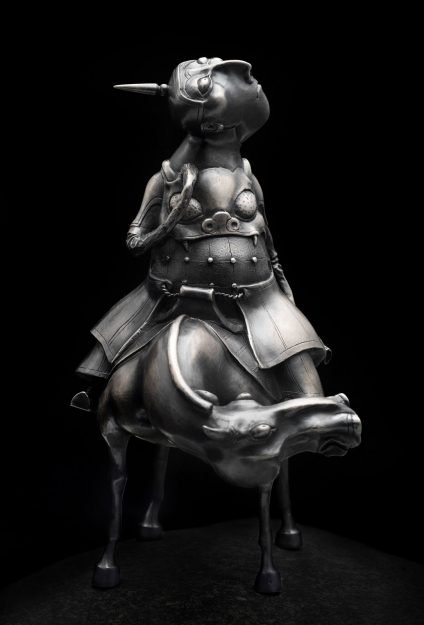
Buryatia has long been the meeting place of great cultures, and Namdakov channels this history into dreamlike works.
